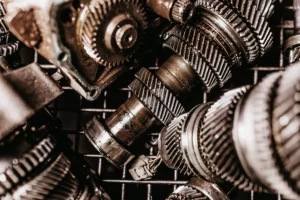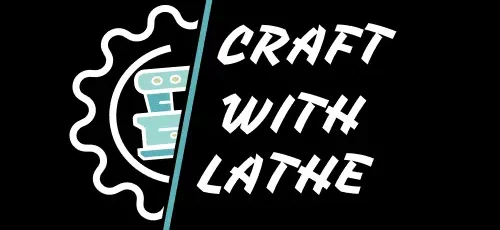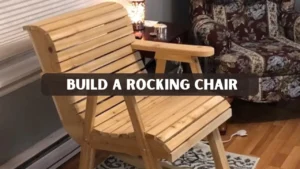How to check Lathe Spindle Bearings. However, the spindle exhibits axial play and radial runout during turning, which seriously affects the processing quality of the workpiece.
Spindle Bearing of Lathe Machine
The spindle is a veritably important part of the lathe. When turning, the lathe spindle bears a great cargo. Thus, when the front and hindering components supporting the spindle aren’t acclimated correctly, colourful blights will occur during processing. However, the spindle exhibits axial play and radial run-out during turning, which seriously affects the processing quality of the workpiece.
How to check Lathe Spindle Bearings Step by Step

Checking the spindle compartments on a lathe is important to ensure the machine’s smooth and safe operation. They are the way to check the lathe spindle compartments.
- Safety First: Always prioritise safety. Turn off the lathe machine and disengage it from the power source to help prevent any accidental launch.
- Access the Spindle Depending on the design of your lathe, you may need to remove a defensive cover or access panel to get to the spindle area.
- Look for Visual suggestions. Examine the spindle and the girding area for any visual suggestions that may indicate a problem. Check for inordinate heat, unusual noise, or any signs of wear and tear, like scratches or dust.
- Homemade Gyration: Gently rotate the spindle by hand to feel for any roughness or resistance. The spindle should turn easily without any jerky movements.
- Lubrication ensures that the spindle compartments are duly waxed. Lubrication is essential for reducing friction and preventing unnecessary wear and tear.
- Check for Play Test for any play or inordinate axial or radial movement in the spindle. There should be minimal to no movement. Any play can indicate worn or damaged compartments.
- Run the Lathe: If you are educated and feel confident, turn on the lathe and run it at a low speed. hear for unusual sounds, climate, or any other signs of problems in the spindle area. Be extremely conservative while doing this.
- Use Diagnostic Tools: In some cases, you may need individual tools like a vibration analyser to assess the condition of the spindle components more directly.
- Consult the Manufacturer: If you are doubtful about the condition of your lathes’ spindle comportments, it’s a good idea to consult the lathe’s manufacturer or a good technician for a professional examination and, if demanded, conservation.
Adjustment of Radial Clearance of Lathe Spindle Bearing

When the lathe cuts, a large radial clearance in the main bearing requires adjusting the front bearing clearance to properly set the spindle bearing’s radial clearance. Taking the C620- 1 lathe as an illustration, when the frontal bearing of the lathe spindle adopts a rolling bearing, the adaptation system for the radial concurrence of the spindle bearing is as follows:
- Loosen the supporting screw of the frontal nut, turn the frontal nut to the right to make the inner ring of the phased bearing move along the axis, and also conduct a trial run. Suppose the lathe spindle doesn’t heat at the highest speed. Under the condition that the supporting screw has no sense of blocking, the spindle can be turned by hand to strain.
- When the frontal bearing of the main shaft adopts a sliding bearing, taking the C620 lathe as an illustration, the adaptation system of the radial concurrence of the main shaft bearing of the lathe is as follows: Loosen the jacking screw, rotate the frontal nut relatively in the constant ring.
- Make the bimetallic bearing move axially, and keep the concurrence between the main shaft of the lathe and the bearing between 0.02 and 0.03 mm.
- After adaptation, the lathe needs a trial run. If there’s no abnormal operation, you can tighten the jacking screws.
- After the below adaptation, control the radial concurrence of the lathe spindle bearing within to 0.01 mm. Examination methods are also needed. Use a dial index to measure the radial runout of the spindle centring shaft diameter.
- However, acclimate the concurrence of the spindle hind bearing and the spindle frontal bearing, if the radial concurrence of the lathe spindle bearing is too large.
Adjustment of Axial Clearance of Lathe Spindle Bearing
When the lathe is turning, if the lathe spindle bearing has axial movement, the main reason is that the clearance of the hindering bearing of the lathe spindle is too large.
- When conforming to the axial concurrence of the lathe spindle, the driver substantially adjusts the concurrence of the hind bearing of the lathe spindle.
- The adaptation system for the axial concurrence of the lathe spindle bearing is as follows loosen the hinder nut support screw, rotate the hinder nut to the right, move the cone rolling bearing inner race along the axis, and reduce the concurrence between the lathe spindle
- shoulder background, thrust ball bearing and hinder bearing seat, and also conduct commissioning inspection. However, strain the support screws, If the lathe operation is normal.
- When conforming to the spindle bearing concurrence, it’s necessary to acclimate to the applicable concurrence corresponding to the maximum speed of the lathe and pay attention to separating the adaptation of each shaft from the engagement shaft to avoid hindrance.
- When the lathe spindle bearing clearance is too large or too small, you can adjust it using the conforming screw.
- Control the axial movement within 0.02 mm, and maintain the concurrence between the spindle and the bearing within 0.01 mm.
Conclusion
How to check Lathe Spindle Bearings We generally use a processing mechanical outfit in the manufacturing industry, which is the lathe. Still, in the long-term operation process, the wear and tear or distortion of the lathe spindle will increase the error of the lathe or change colourful concurrences, which will interfere with the machining delicacy of the lathe, and indeed affect its product rate and operation safety. The composition will explain the system of conforming the lathe spindle bearing concurrence in detail.
FAQ’s
What are the common types of lathe spindle arrangements?
How can I maintain lathe spindle postures?
Maintain lathe spindle comportments by regularly slicking, checking for run out, covering temperature, avoiding overloading, keeping the terrain clean, examining for wear and tear, and following manufacturer guidelines.




